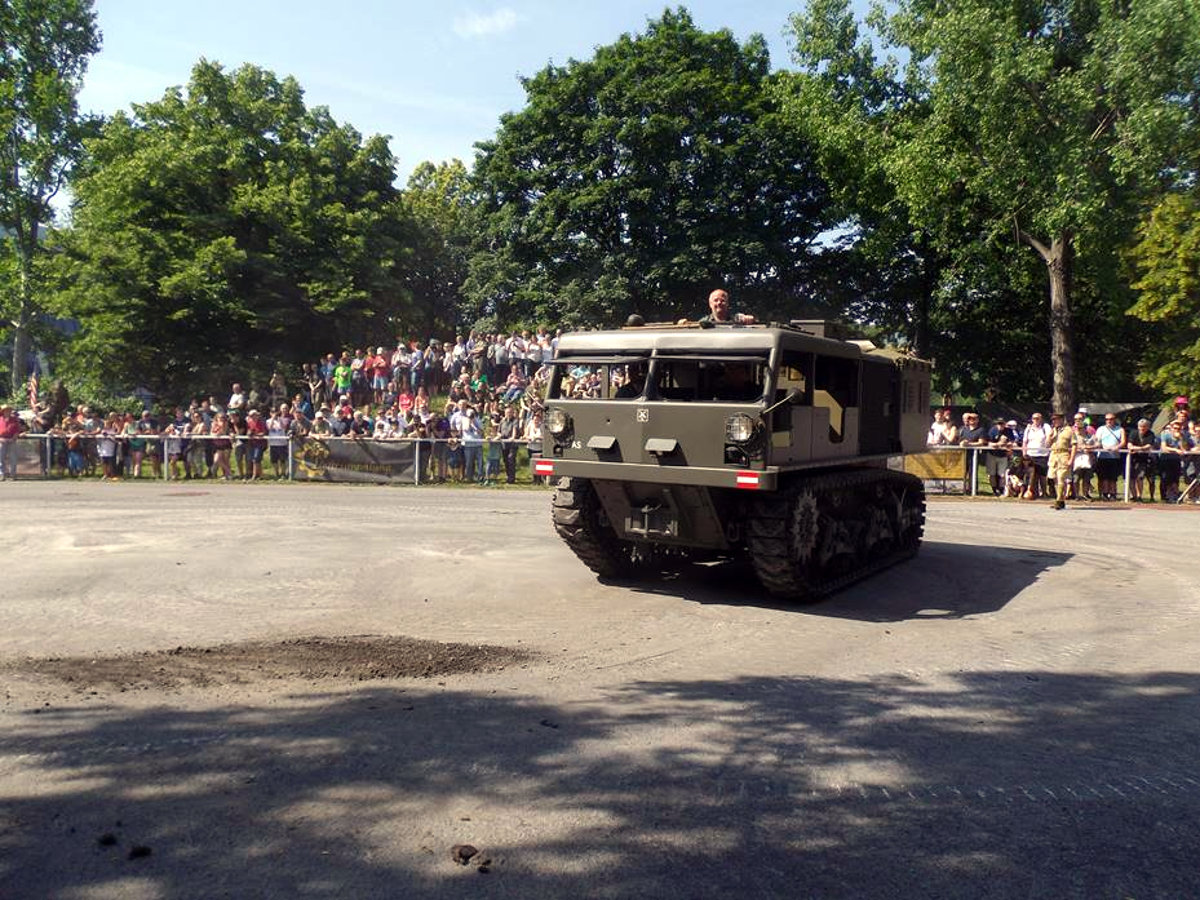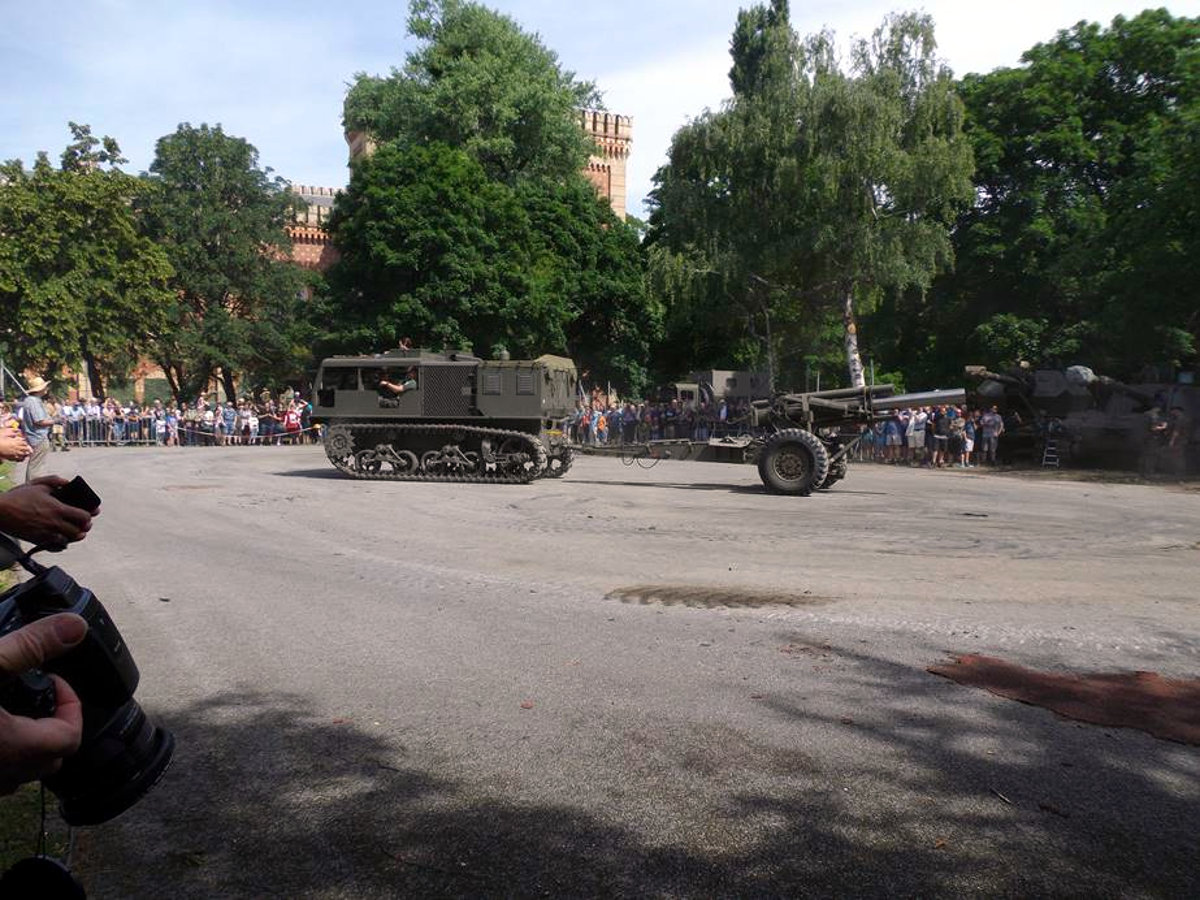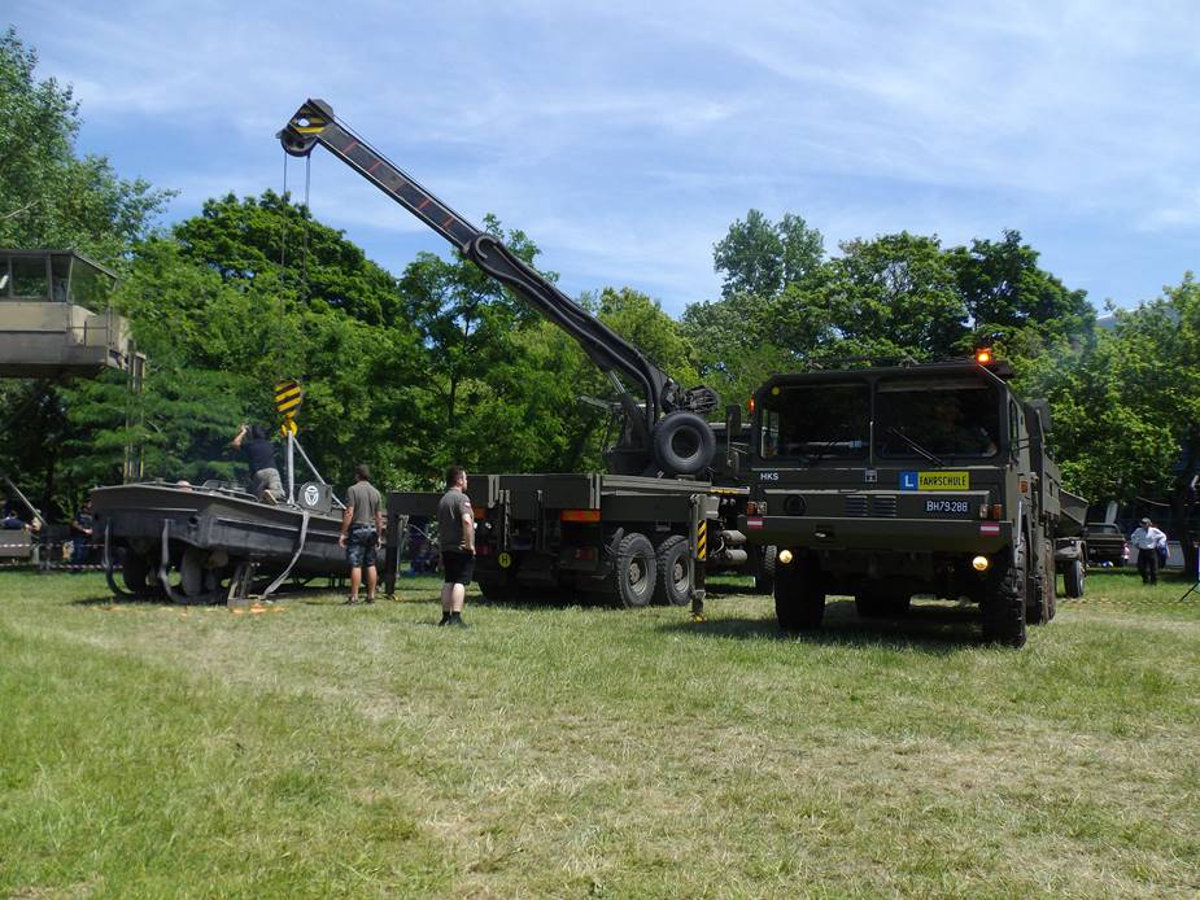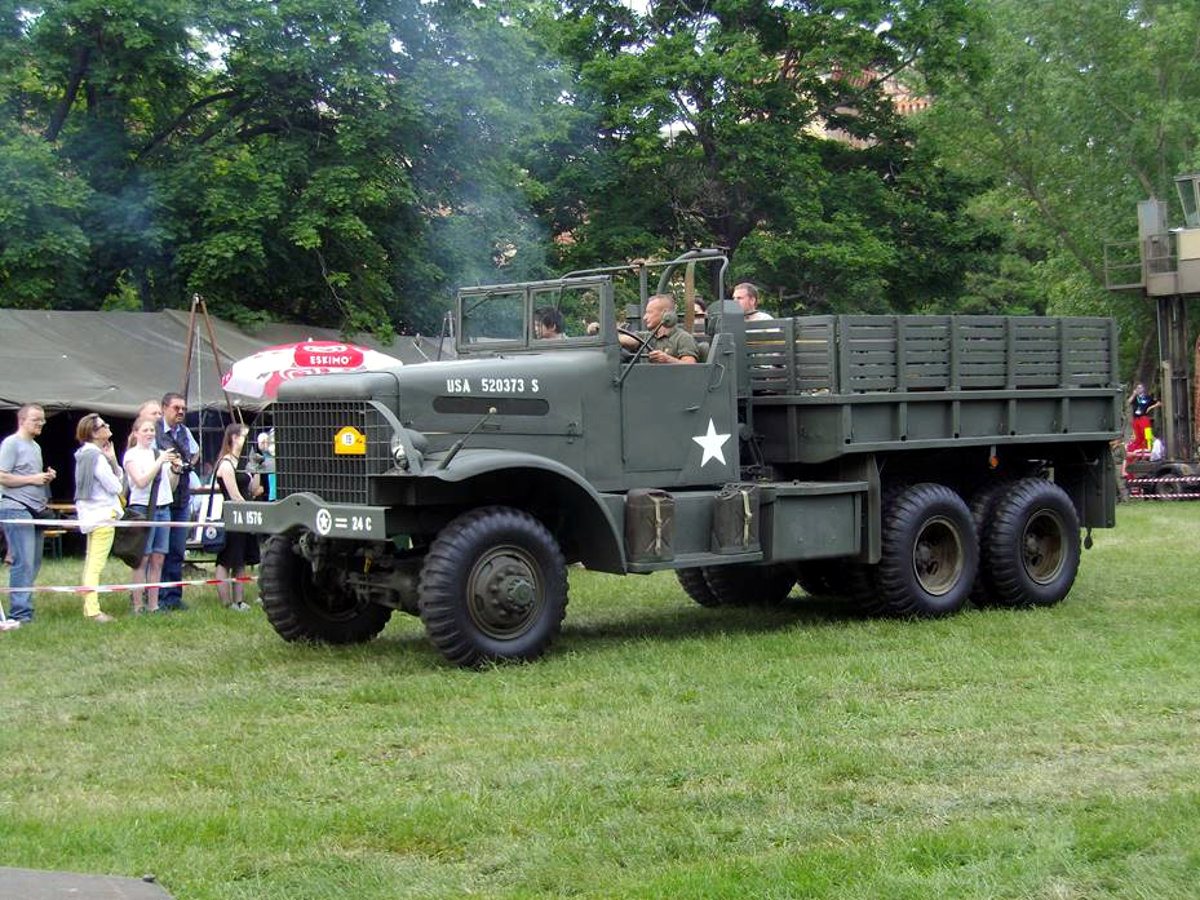The annual meeting of military vehicles at the Museum of Military History in Vienna already celebrated its tenth anniversary. Over the three-day event, more than 14000 visitors visited the Museum, and the Traditionsverband again had its own special presentations on Saturday and Monday.
As a special highlight we could bring back to Austria an M4 High Speed Tractor, in service with the Austrian Army until 1970 and then returned to the US. Built in 1943, the vehicle survived from D-Day in 1944 until the end of the war in Austria. It then stayed with the US occupational forces in Austria, and upon the re-establishment of the Austrian Army in 1955 was handed over together with a large contingent of allied war material. It was then used to tow artillery until 1970 when all remaining M4 HSTs were retired and returned to the US military. It was shipped back to the US where it was auctioned off and acquired by a logging company in Pennsylvania. Fortunately the vehicle was never tampered with, and in 2007 it was acquired by an English collector who brought it to Great Britain and started a major restoration. Fully re-conditioned to its US-markings it was offered for sale in 2016, bought by us and brought to Austria where we returned it to its Austrian color scheme and unit designations of the Artillery School, until 2013 located in the Martinek Barracks in Baden, right next to the Army Driving School.


Another highlight of our presentations war the completely refurbished first “Pinzgauer” prototype from 1967. Chassis number 575-0001 was tested at the Army Driving School, then handed over to the Salzburg Army Command and saw service on the alpine Hochfilzen training/proving grounds. It was then transferred to the 3rd Tank Grenadier Brigade in Mautern and finally sold off in 1984, preserved in private hands for the next thirty years until it came to us and was fully refurbished.
The special HKFW presentation on Saturday and Monday demonstrated the offloading and launching of an M3D engineer launch. Transported on an ÖAF sLKW with special trailer, the two-part boat was offloaded by an ÖAF PK 30 recovery crane and “launched” on the lawn behind the Museum. After connecting the two halves, the engines were started and propellers engaged to demonstrate the workings of the boat. This launch is owned by the Military History Museum and together with the two surviving Austrian Danube patrol boats “Niederösterreich” and “Oberst Brecht” is being preserved by the “Marinekameradschaft Admiral Erzherzog Franz Ferdinand” (MKFF, www.mkff.at).
During the first presentation on Saturday, our team had the launch “in the water” and the engines started after 20 Minutes. On Sunday, our friends from the tank preservation group demonstrated an engine swap on an M60 medium battle tank and could restart the re-inserted engine after 11-½ minutes. This really challenged our team, and on Monday we could start the launch’s engines also after 11-½ minutes!




